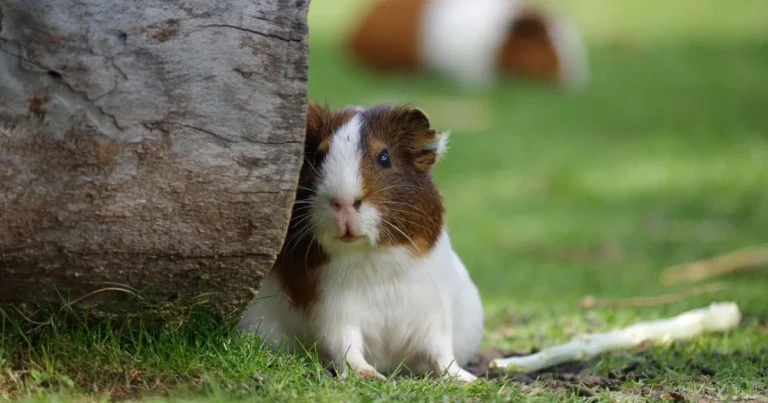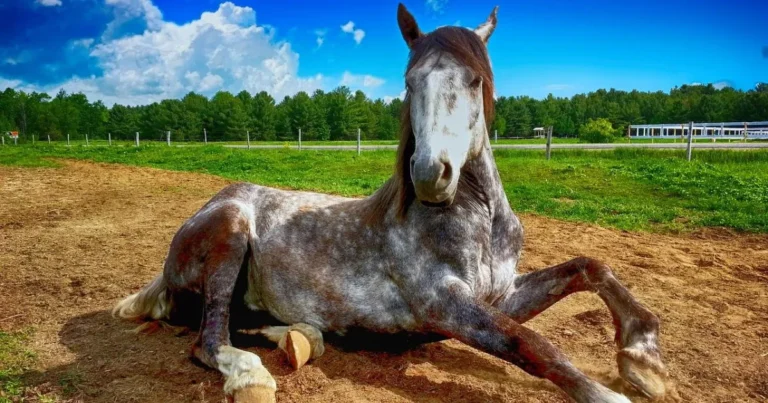Hamster Average Lifespan: How Long Can a Hamster Live?
Table of Contents
Thinking about getting a hamster as a pet? It’s important to know how long they live. Hamsters usually live between 1.5 to 3 years in a home. This depends on their breed and how well they are cared for.
Several things can affect how long your hamster lives. Their genes, what they eat, where they live, and their health are all important. Each type of hamster is different, which can change how long they live.
Even though hamsters don’t live as long as some pets, they can still bring a lot of happiness. Taking good care of them, feeding them right, and watching over them can help them live longer and stay healthy.
Knowing about hamster longevity helps you take better care of your pet. The next parts will talk more about what affects hamster lifespan and how to keep them happy and healthy.
Hamster Average Lifespan: How Long Can a Hamster Live? Understanding Different Species and Their Lifespans
Hamsters come in many species, each with its own traits and lifespan. Knowing the differences helps you care for them better and understand what to expect.
Syrian Hamsters (Golden Hamsters)
Syrian hamsters live about 2 to 3 years with good care. They are the most common pets, known for their golden fur and being alone. They need big spaces and their own homes because they like their territory.
- Average lifespan: 2-3 years
- Size: Largest hamster species
- Color variations: Golden, white, black, and mixed
Dwarf Hamster Varieties
Dwarf hamsters live about 1.5 to 2 years. They include types like Campbell’s, Winter White, and Chinese dwarf hamsters. They like to be with others of the same sex.
| Dwarf Hamster Type | Average Lifespan | Unique Characteristics |
|---|---|---|
| Campbell’s Dwarf | 1.5-2 years | Gray-brown coloration |
| Winter White | 1.5-2 years | Changes fur color in winter |
| Chinese Dwarf | 1.5-2 years | Smaller than other varieties |
Roborovski Hamsters
Roborovski hamsters live the longest, up to 3.5 years. They are the smallest and fastest hamsters, known for their speed and agility.
- Smallest hamster breed
- Most active species
- Sand-colored fur with distinctive white eyebrows
Tip: Proper care, nutrition, and a stress-free home can help your hamster live longer.
Hamster Average Lifespan: Key Factors That Determine Longevity
To understand how long hamsters live, we must look at important factors. Genetics are key in determining a hamster’s lifespan. Some hamsters are bred to live longer, so choosing the right one is crucial.
The care and environment of your hamster greatly impact their life. Several factors are key to their health and how long they live:
- Nutritional quality of diet
- Stress management
- Habitat conditions
- Regular veterinary check-ups
- Genetic background
Nutrition is very important for hamster longevity. A diet full of proteins, vitamins, and minerals helps prevent health problems. Keeping your hamster stress-free is also key. A calm, safe place helps their mind and body stay healthy.
| Factor | Impact on Lifespan | Recommended Action |
|---|---|---|
| Diet | High | Balanced nutrition, fresh foods |
| Exercise | Medium | Provide wheel, toys, exploration opportunities |
| Genetic Health | Very High | Choose reputable breeders |
Good veterinary care is vital for a long hamster life. Regular visits help catch health problems early. This ensures your hamster gets the care they need to live longer.
Remember, each hamster is unique, and while these factors provide a comprehensive guide, individual care and attention remain the most crucial elements in supporting your hamster’s health and longevity.
Hamster Average Lifespan: How Long Can a Hamster Live with the Right Diet and Nutrition?
Proper nutrition is key to keeping your hamster healthy and happy. Knowing what your hamster needs can help you care for them better.
A balanced diet is vital for your hamster’s health. It can help prevent sickness and even increase their lifespan.
Essential Foods for Optimal Health
Your hamster’s diet should include:
- High-quality commercial hamster pellets
- Fresh vegetables in small quantities
- Lean protein sources
- Limited seed mixtures
Foods to Avoid
Some foods are bad for your hamster and should be avoided:
- Chocolate
- Citrus fruits
- Onions and garlic
- Sugary or fatty treats
Proper Feeding Schedule
Feeding your hamster at the same times every day is important. Give them small amounts of food once or twice a day. Make sure they always have fresh water. Controlling food portions helps avoid obesity and health problems.
Talk to a vet to make a diet plan that fits your hamster’s needs.
Creating the Perfect Habitat for Extended Lifespan
Creating a great home for your hamster is key to a longer life. The right habitat boosts your hamster’s health and life span. A well-designed space can greatly improve your pet’s life and maybe even its lifespan.
When setting up the perfect hamster home, remember these important points:
- Cage Size: Pick a big cage for your hamster to move around
- Ventilation: Make sure there’s good air flow to avoid breathing problems
- Bedding: Use soft, warm materials for comfort
- Temperature Control: Keep the room temperature between 65-75°F
For a fun and safe habitat, include these:
- Exercise Wheel: Choose a solid wheel to avoid injuries
- Hiding Spots: Add tunnels and small houses for safety
- Climbing Accessories: Put in platforms and safe climbing spots
- Chew Toys: Give toys that help keep teeth healthy
Keeping the habitat clean is vital for your hamster’s health. Clean the cage every week, change the bedding, and disinfect toys. Keep the area quiet and away from sunlight and drafts. A thoughtful, engaging environment supports your hamster’s health and happiness.
“A comfortable home is the foundation of a happy, healthy hamster.”
Common Health Issues Affecting Hamster Longevity
It’s important to know about health problems to keep your hamster healthy. These issues can shorten their life if not treated quickly.
Hamsters face many health problems that can cut their short lives even shorter. Spotting symptoms early and getting vet help can keep your hamster healthy. This might even make them live longer.
Respiratory Problems in Hamsters
Respiratory infections are a big risk for hamsters. Look out for these signs:
- Wheezing or labored breathing
- Discharge from nose or eyes
- Reduced activity levels
- Sneezing and coughing
Wet Tail Disease
Wet tail disease is a deadly illness mainly in young hamsters. It’s a bacterial infection that can quickly make a hamster very sick and shorten their life.
Signs of wet tail disease include:
- Watery diarrhea
- Lethargy
- Loss of appetite
- Hunched posture
Dental Issues
Dental problems can make it hard for a hamster to eat. Overgrown teeth can stop them from eating, leading to weight loss and health issues.
| Health Issue | Potential Impact on Lifespan | Prevention Strategies |
|---|---|---|
| Respiratory Infections | Can reduce life expectancy by 30-50% | Clean habitat, avoid drafts, maintain proper temperature |
| Wet Tail Disease | Potentially fatal if untreated | Minimize stress, maintain clean environment |
| Dental Problems | Can limit nutrient intake | Provide chew toys, regular dental checks |
Regular vet visits and good care can help manage these health problems. This might help your hamster live longer and happier.
Exercise and Mental Stimulation Needs
Keeping your hamster active is key to a long and happy life. Regular exercise helps prevent obesity and stress. It also keeps your pet physically and mentally fit.
Exercise equipment is essential for your hamster’s health. Here are some great options to keep your furry friend active:
- Exercise wheels (solid surface recommended)
- Hamster balls for supervised exploration
- Tunnels and climbing structures
- Puzzle toys that challenge mental skills
Mental stimulation is just as important for your hamster’s happiness. Interactive toys and changing the habitat can prevent boredom and stress.
| Exercise Type | Benefits | Recommended Duration |
|---|---|---|
| Running Wheel | Cardiovascular health | 1-2 hours nightly |
| Maze Exploration | Mental stimulation | 15-30 minutes daily |
| Climbing Structures | Muscle strength | 30 minutes intermittently |
Make your hamster’s environment exciting by changing toys and hiding spots. Also, let them play outside the cage under supervision. These steps can greatly help in extending your hamster’s life and keeping them happy and healthy.
Signs of Aging in Hamsters
As your hamster gets older, you’ll see changes that show it’s aging. Knowing these signs helps you care for your hamster better. It ensures they are comfortable in their later years.
Physical Transformations
Aging hamsters show physical changes that show they’re getting older. Look out for these signs:
- Fur becomes thinner and loses its vibrant color
- Reduced muscle tone and potential weight loss
- Slower movement and less flexibility
- Potential development of gray or white fur patches
Behavioral Shifts
Your hamster’s personality might change as it ages. You might see these changes:
- Increased sleep duration
- Reduced interest in social interactions
- More cautious and less exploratory behavior
- Potential increased irritability
Activity Level Modifications
The hamster’s life expectancy affects its activity levels. You might notice:
- Decreased energy and enthusiasm
- Shorter play and exercise sessions
- Less frequent wheel running
- Longer rest periods between activities
Knowing these signs helps you adjust your care. It ensures your hamster gets the support they need as they age.
Hamster Average Lifespan: How Long Can a Hamster Live with Proper Preventive Care and Veterinary Support?
Keeping your hamster healthy means taking care of them before they get sick. Regular vet visits and watching their health closely can help. This way, you can spot problems early and keep your hamster happy and healthy for a long time.
It’s important to take your hamster to the vet often. Vets can find health issues that you might miss at home. They suggest going at least twice a year for a full check-up.
- Annual physical examinations
- Dental health screenings
- Weight and nutritional assessments
- Preventative parasite treatments
Choose a vet who knows about exotic pets or small animals. They know how to keep your hamster healthy and can give you the best advice.
| Age Group | Recommended Check-up Frequency | Primary Health Focus |
|---|---|---|
| Young Hamsters (0-6 months) | Every 4-6 months | Growth monitoring |
| Adult Hamsters (6-18 months) | Twice yearly | Preventive screenings |
| Senior Hamsters (18+ months) | Every 3-4 months | Comprehensive health evaluation |
Looking after your hamster at home is also key. Learn to do simple health checks and keep their cage clean. Spotting health problems early can really help your hamster get better faster.
“Preventive care is the cornerstone of maintaining your hamster’s health and happiness.” – Veterinary Exotic Animal Care Center
By focusing on vet care and keeping up with your hamster’s health, you can make sure they live a long, happy life. They’ll stay full of energy and feel comfortable.
Conclusion
Knowing how long a hamster lives is more than just basic facts. Your care can greatly affect their life span. By following the tips in this guide, you can help your hamster live longer and healthier.
Good food, a nice home, vet visits, and fun activities are key. Each hamster is different, but the basics of good care stay the same. Learning what your hamster needs helps them live a long and happy life.
Every hamster is unique, with their own health needs and quirks. By paying close attention to their health and behavior, you can improve their life. With the right care, your hamster can enjoy a happy and healthy life, even if it’s short.
Being a good hamster owner means caring with patience, knowledge, and love. By focusing on their physical and emotional needs, you create a loving space. This ensures they live their best life.







